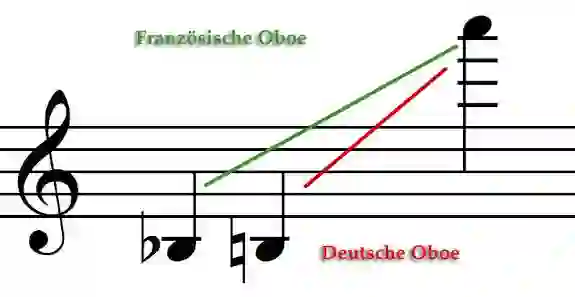Notation and sound generation of the Oboe - Philipp Dangas
Notation and sound generation of the Oboe
The oboe is a conical, non-transposing (identical in sound and notation) woodwind instrument with a double reed. The basic scale of the oboe is D major and ranges from d1 to c sharp2 with the chromatic intermediate tones. The French oboe has 4 additional keys to produce the semitones b (a sharp), b, c1 and c sharp1 below d1. The old German oboe only has the corresponding keys for the tones h, c1 and c1 sharp.
The oboe, as a conical reed instrument, “overblows” by an octave. Flageolets can be created by overblowing and using the octave key. For normal use of the oboe in an orchestra, the top limit of the scale is f3. The overall tuning of the oboe can be changed slightly by moving the metal rod. The oboe is notated in the treble clef according to the actual sound of the notes, i.e. not transposing.
Download size: 425 kilobytes
Table summary of playing techniques on the oboe
The following table lists the playing techniques and playing effects on the oboe shown. The playing techniques that are not suitable are also briefly mentioned.

The range of an oboe in large scale
From b [minor octave] to a3 [treble octave]
Internal search function
| Name | Value | Delete |
|---|